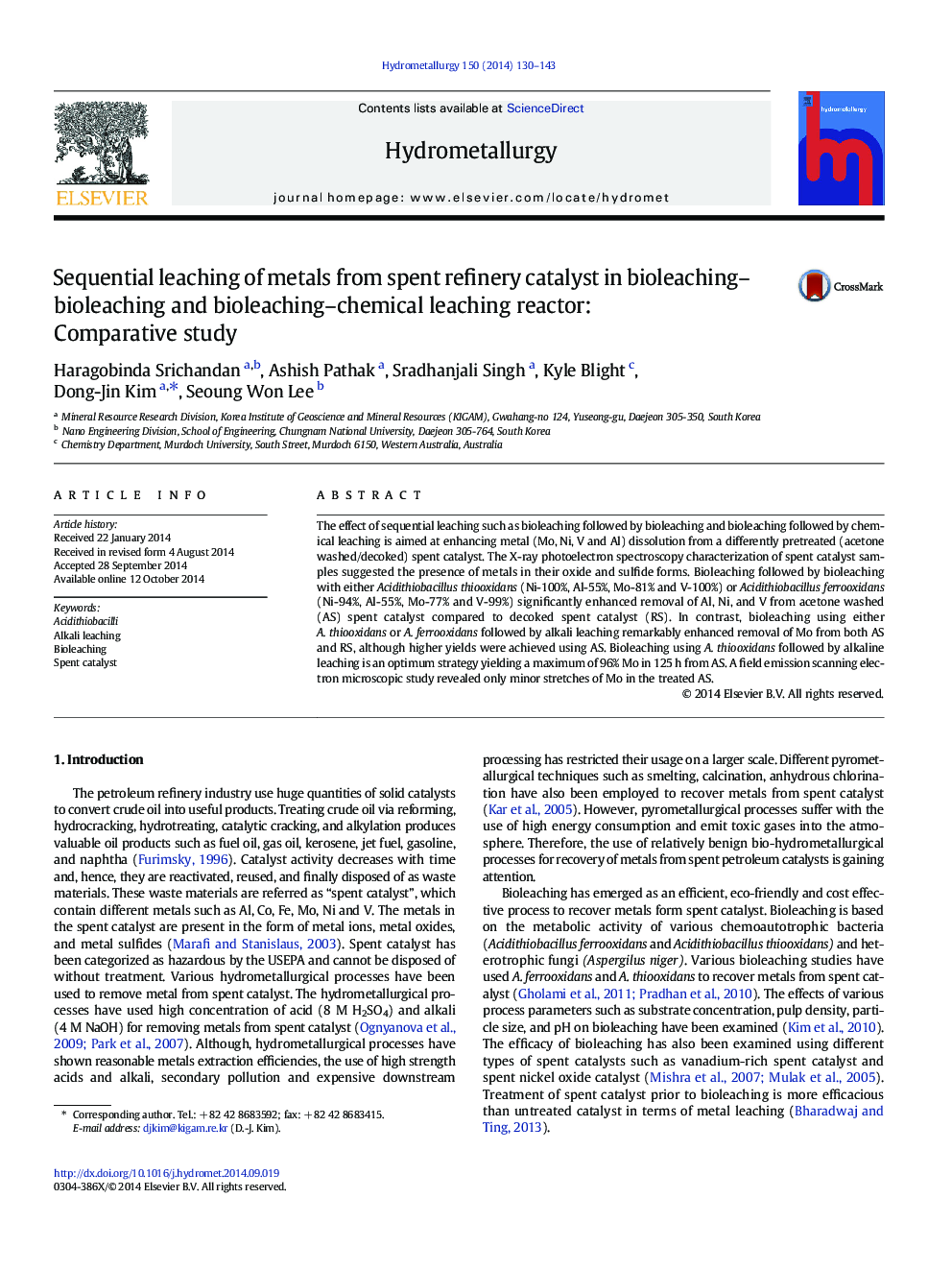| Article ID | Journal | Published Year | Pages | File Type |
|---|---|---|---|---|
| 212164 | Hydrometallurgy | 2014 | 14 Pages |
•XPS confirmed the presence of metals in spent catalyst in oxide and sulfide forms.•Higher metals leaching yield were obtained from acetone washed spent catalyst compared to decoked spent catalyst.•Two stage bioleaching using At. thiooxidans significantly enhanced the leaching yields of all metals (Al, Ni, Mo and V).•The solubilization of Mo can be remarkably enhanced by coupling bioleaching with alkali leaching.
The effect of sequential leaching such as bioleaching followed by bioleaching and bioleaching followed by chemical leaching is aimed at enhancing metal (Mo, Ni, V and Al) dissolution from a differently pretreated (acetone washed/decoked) spent catalyst. The X-ray photoelectron spectroscopy characterization of spent catalyst samples suggested the presence of metals in their oxide and sulfide forms. Bioleaching followed by bioleaching with either Acidithiobacillus thiooxidans (Ni-100%, Al-55%, Mo-81% and V-100%) or Acidithiobacillus ferrooxidans (Ni-94%, Al-55%, Mo-77% and V-99%) significantly enhanced removal of Al, Ni, and V from acetone washed (AS) spent catalyst compared to decoked spent catalyst (RS). In contrast, bioleaching using either A. thiooxidans or A. ferrooxidans followed by alkali leaching remarkably enhanced removal of Mo from both AS and RS, although higher yields were achieved using AS. Bioleaching using A. thiooxidans followed by alkaline leaching is an optimum strategy yielding a maximum of 96% Mo in 125 h from AS. A field emission scanning electron microscopic study revealed only minor stretches of Mo in the treated AS.
Graphical abstractFigure optionsDownload full-size imageDownload as PowerPoint slide
